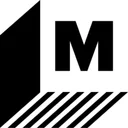‘When Can I Shred This Check?’ and Other Online Banking FAQ

Many, or all, of the products featured on this page are from our advertising partners who compensate us when you take certain actions on our website or click to take an action on their website. However, this does not influence our evaluations. Our opinions are our own. Here is a list of our partners and here's how we make money.
As the use of online technology for banking grows, customers trying online banking for the first time may find themselves with questions about how to handle things previously done in person or with paper documents.
If you’re stuck on how to handle some of the practical aspects of online banking, here are answers to common questions.
Should I save monthly statements?
Experian, one of the three major credit bureaus, recommends keeping bank statements for tax purposes to confirm your income or deductible expenses. If you do end up using your statements for your taxes, you may want to hang onto your statements for up to seven years in case the IRS decides to audit you. Even if your bank keeps digital records of your statements, you may want to print or download your statements just in case.
» See NerdWallet's picks: Top online checking accounts
When should I shred the paper check from a mobile deposit?
Major banks recommend that after you’ve made a mobile deposit, you write “mobile deposit” and the date of deposit on the front of the check. Keep the check until you’ve made sure the deposit has gone through — which may take several days — and that the bank doesn’t need the original check for any reason. Once the check has been cleared in your account, it’s best to shred it.
Forbright Bank Growth Savings

4.00%
$0

Member FDIC
Varo Savings Account

5.00%
$0
E*TRADE Premium Savings

3.50%
$0
How do I send money or pay bills through my mobile banking app?
If you want to send money to friends or family, your bank may have you covered with the Zelle money transfer service. Zelle, which is integrated with many major banks and also available as a separate app, allows registered users to receive and send money from their bank accounts.
You can also sign up for money transfer apps like Venmo or Cash App and link them to your bank account to send and receive money, as long as your sender or recipient has the same app.
To pay your bills online, your bank might have the option to set up recurring payments to services like your cell phone provider or utility company, allowing you to automate your monthly bills. Some banks can also send a check on your behalf if necessary. Wells Fargo, for example, offers online bill pay services, but you can also schedule paper checks to be sent for you if your service provider doesn’t accept electronic payments. Search your bank’s FAQs or reach out to its customer service department for details on its bill-pay features.
» Need to send money fast? How to get money to family and friends in a crisis
What should I do if my mobile banking app isn't working?
It’s a universal truth that technology comes with occasional frustrations. Sometimes banks experience app outages, and sometimes there are problems on the user side. There are a few things you can do to diagnose the problem:
Make sure your login credentials are correct. Entering an incorrect username and/or password is a common stumbling block and will prevent access to your account. Some banks might even lock you out after too many failed login attempts. If you’ve forgotten your login information, contact your bank’s tech support team.
Check your email and your bank's social media accounts. Your bank may have posted on its Facebook or X accounts or sent an email notification about any known app problems. Many consumers today also use their banks’ platforms to flag problems themselves. If there’s an outage, your bank may post information on how long it’s expected to last and how you can access your account in the meantime. Bookmark or follow your bank’s social media accounts for quick access.
Update your app and/or your phone software. Your version of the app could be out of date, or your phone’s software may need updating to use a newer version of the app. Go to your phone’s app marketplace, search for your bank’s app and see if there’s an option to update.
Get technical support from your bank. For help, reach out to your bank’s customer service representatives by phone, email or chat, if available.
Use your desktop login or visit a branch or ATM. If your app isn’t working, you may still be able to log in on a desktop computer. If your bank has physical branches, you should be able to get in-person service. If you’re trying to deposit a check or check your balance, you can use an ATM, as long as your bank offers use of a network.
This article was written by NerdWallet and was originally published by The Associated Press.












